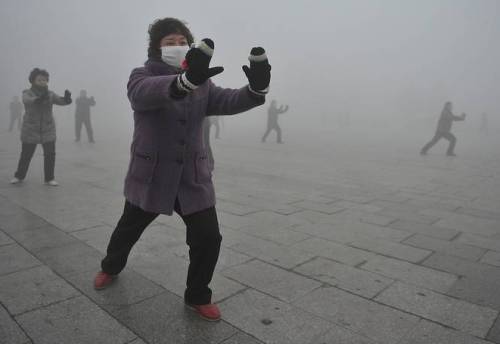
With the constant focus on PM 2.5 as the main culprit behind Beijing’s air pollution woes, it was inevitable that differing opinions would arise about the source of all this filth; the real surprise in the matter is how official these opinions would be.
Rejecting the socialist utopia of a “comrade in every car” is none other that the Beijing Municipal Environmental Protection Bureau. Bureau spokesperson Fang Li refuted a report last week from the Chinese Academy of Sciences (CAS) that stated cars are not a major source of air pollution, and put a chunk of blame right back on on the heads of Beijing’s 5 million or so motor vehicle owners.
The folks at the city’s Environmental Protection Bureau recently conceded that 2013 showed almost no improvement over 2012, but their analysis claims that 22% of the PM 2.5 comes from automotive emissions. CAS has the figure at less than 4%.
We don’t want to pick sides in this case of “he said, she said” – honestly, despite our health being the bottom line, this is really just something that needs to be worked out between CAS and the environmental guys. Even if cars emitted nothing but pure oxygen there’s no disagreement that controlling the volume of cars on the roadway needs to be part of the solution. Recent measures to do so include continuous restriction of new vehicles via a license plate lottery and new regulations designed to encourage carpooling.
Additonally, the environmental bureau is aiming to monitor the city’s automotive emissions even more closely to perhaps end this debate. New monitoring stations are to be set up along the city’s fifth and sixth ring roads and other traffic arteries into the urban center. Zhang Dawei, director of the Beijing Municipal Environmental Monitoring Center, stated that the target of these monitoring stations are the heavy diesel vehicles that apparently account for 50% of the city’s nitric oxide emissions despite only comprising 5% of its traffic.

